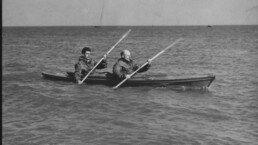
The latest ‘affordable’ supercar from Poland has been in the news recently for making its mark in the world of racing. The Arrinera Hussarya made an appearance at last year’s Goodwood Festival of Speed and since then the team behind it have spent a year honing it, in order for it to face the likes of Mercedes, McLaren and other motor racing giants. What’s more, unlike other racing cards, this one plans to be a road-race hybrid (so, fully road legal) and the new Hussarya GT will set you back less than a second-hand Ferrari.

So what helped the team to fulfil the dream of a racing car that puts an end to the long-held belief that for most, motor racing is an unattainable dream?
Metrology news reported that 3D scanning was used to achieve the “precision and durability” required to produce the prototypes that still functioned as efficiently as a sports car. Furthermore, using 3D scanning technology allowed cost savings to be made that were crucial to generating a successful proof of concept on limited investment.

The article explains how engineers “gained the ability to quickly obtain comprehensive information about the geometry of the car parts” with “a field view of 800×600 mm, the 3D scanner obtains a point cloud representing the scanned shape with 0,084 mm accuracy”.
Using a rotary stage with a generous capacity allowed for almost any car parts to be recorded with this accuracy and efficiency, with a resultant point cloud that “from a single measurement can consist of 5 or 10 million points for a resolution of 5 or 10 megapixels, respectively”. This was all made possible due to the use of carbon fiber and an effective shock absorber system.
The resulting CAD models provide the engineers working on this project with several options moving forwards. Firstly, they are able to quickly ascertain how effective that part will be under certain circumstances, and from there, improve the design. Following this, they are able to use 3D printing technology to reverse engineer or create new parts.
Original story and imagery from: http://metrology.news/super-car-development-benefits-from-3d-scanning
Recent news posts

Related news articles
7th February 2024
Revving Up Innovation: T3DMC Becomes Prodrive’s Official 3D Scanning Partner
Explore how our 3D scanning partnership with Prodrive is accelerating advancements in motorsport and driving innovation.
29th August 2023
Portable 3D Scanning,3D Scanning
Preserving History With 3D Scanning Technology: The Mk2 Cockle Canoe, Operation Frankton
Preserving history with SIMSCAN. Capturing 3D data of WW2's unsung hero, Operation Frankton's Mk2 Cockle Canoe.










